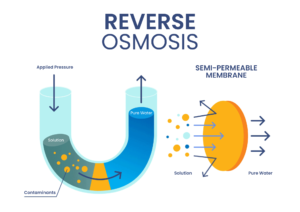In the restaurant industry, the presentation of dishes and beverages plays a key role in capturing customers’ attention and providing...
Leggi TuttoWashing Equipment in Food Service
In the food service industry, cleanliness and hygiene are essential to ensure food safety and provide high-quality service to customers. Among the key elements for maintaining high hygiene standards, washing equipment in food service plays a crucial role. These machines and tools are designed to simplify and optimize the cleaning of dishes, utensils, pots, glasses, and other kitchen items, helping to reduce both time and resource consumption.
The Importance of Washing Equipment in Food Service
Health regulations require restaurants, cafeterias, bars, pizzerias, and hotels to meet strict hygiene standards. Using appropriate washing equipment not only helps comply with these rules but also increases kitchen productivity. Having efficient, high-performance machines means reducing water and energy waste, saving time, and improving workflow.
Types of Washing Equipment
The market offers a wide range of washing equipment for food service, each suited to different workloads and business types. Here are the most common:
1. Professional Dishwashers
Designed to wash large volumes of plates and cutlery quickly. They come in various types:
Hood-type dishwashers: ideal for restaurants with high workloads.
Front-loading dishwashers: perfect for smaller spaces or businesses.
Conveyor or tunnel dishwashers: used in large canteens and industrial kitchens.
2. Glasswashers and Compact Units
Especially useful for bars, cafés, and pastry shops, these machines clean glasses and delicate cups effectively. They are compact, quiet, and energy-efficient.
3. Pot Washers and Utensil Washers
Built for washing large pots, pans, trays, and food containers. Essential for bakeries, delis, and centralized kitchens.
4. Professional Sinks and Pre-Rinse Units
Although often considered auxiliary, stainless steel sinks with professional pre-rinse sprayers are essential for manual prewashing, rinsing, or cleaning non-dishwasher-safe items.
How to Choose the Right Washing Equipment
To choose the best washing equipment for food service, consider the following factors:
Daily washing volume: how many items need cleaning per day.
Available kitchen space: your kitchen layout determines the suitable machine type.
Energy and water consumption: opting for low-consumption equipment ensures savings and sustainability.
Ease of use and maintenance: user-friendly devices reduce downtime and training needs.
The Benefits of Automated Washing in Professional Kitchens
Using automated washing equipment in food service brings numerous benefits:
Consistent and certified hygiene
Time and labor savings
Operational efficiency
Lower operating costs
Many modern dishwashers also feature smart programs that automatically adjust temperature, cycle time, and water volume based on the actual load, delivering perfect results with minimal environmental impact.
Conclusion
Investing in washing equipment in food service is a strategic decision for any business in the food and hospitality industry. Today’s technology ensures impeccable hygiene, resource savings, and better kitchen organization. Whether you run a small bistro, a corporate cafeteria, or a hotel restaurant, choosing the right washing equipment is essential for safe, efficient operations that meet hygiene regulations.
Professional Dishwasher: Complete Guide to Choosing the Right Model
Professional Dishwashers: Types and How to Choose the Right One Why Choose a Professional Dishwasher for Your Business? Every restaurant,...
Leggi TuttoCerca nel Sito
Recent Posts
- Catering Equipment: A Complete Guide to the Best Professional Solutions
- AI Chatbot for Restaurateurs: A Virtual Assistant for Hospitality Professionals
- The customised menu revolution: the future of professional restauration
- Complete Guide to the Equipment Needed to Open a Pizzeria
- Reverse osmosis: the secret to shining glasses in your restaurant
- KAMADO BBPRO: The grill that would make any chef dream.
- Scugnizzo napoletano: the first electric oven for true Neapolitan pizza
- Morello Forni pizza ovens: the real difference is made in baking
- HOSHIZAKI ICE MAKERS: RELIABILITY, HYGIENE AND DESIGN IN A SINGLE PRODUCT
- Spiral Mixers for Highly Moisturised Dough: A Complete Guide


